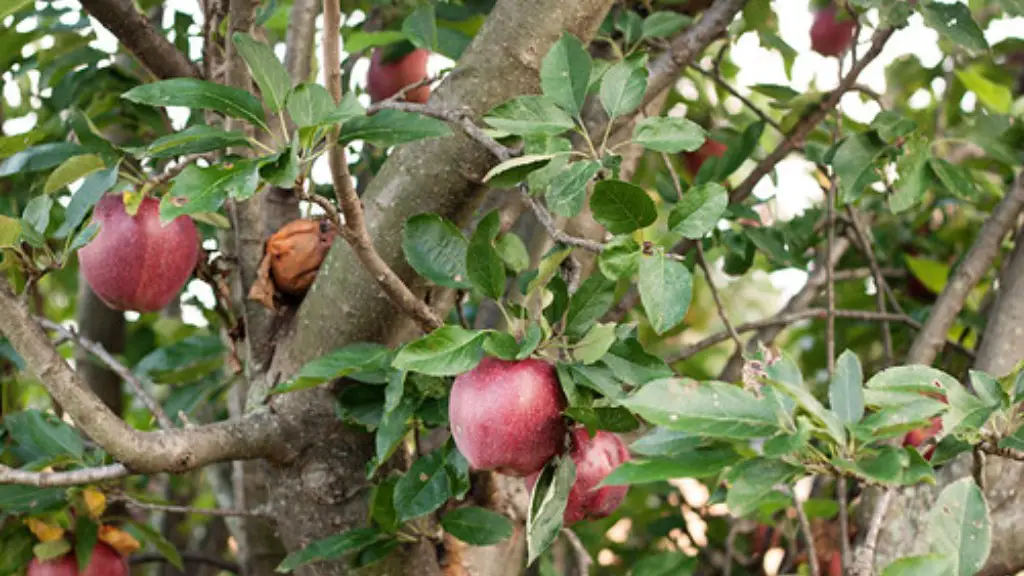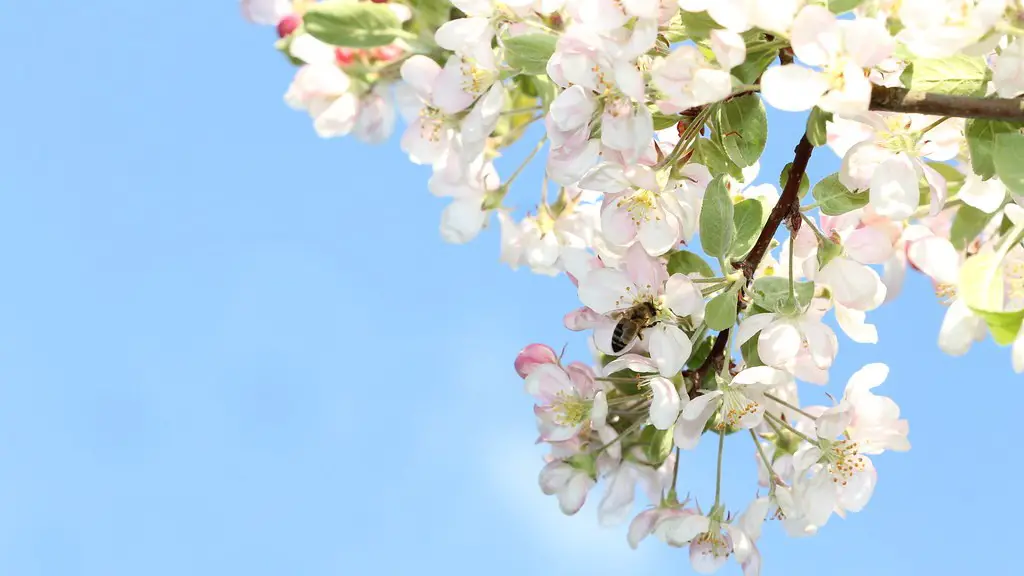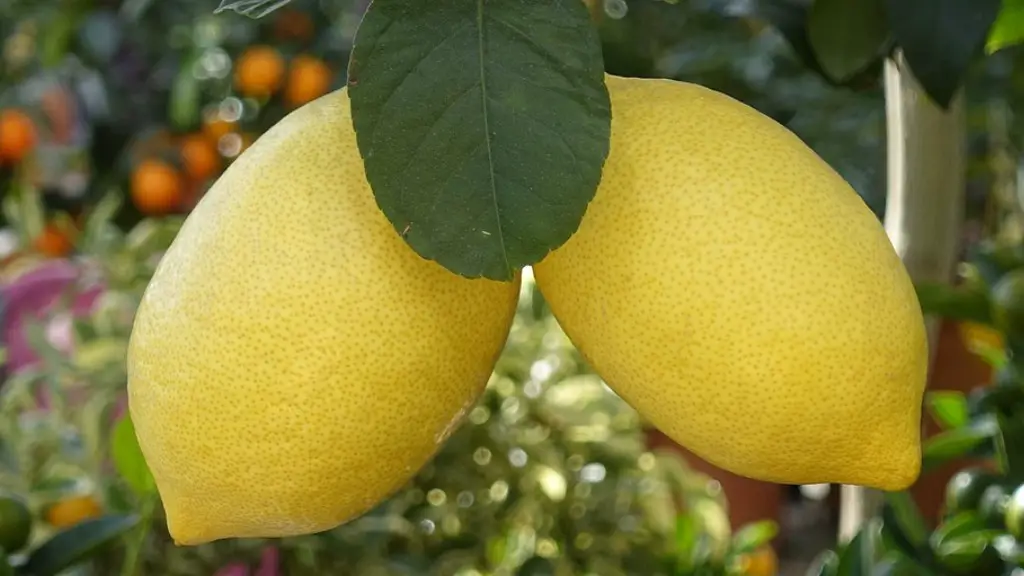The crab apple tree is an excellent choice for a variety of landscaping projects. Its ability to thrive in both full sun and partial shade makes it an excellent addition to any garden or yard. When choosing where to plant a crab apple tree, there are several factors to consider.
First and foremost, think about the drainage of the soil. Crab apple trees do best with soil that is moist but well-drained. Rich, loamy earth with a neutral pH level of 6.0 to 7.0 is ideal. The soil should also be amended with compost, manure or other organic materials prior to planting.
Another factor to consider when choosing a location for a crab apple tree is the amount of sun the tree will receive. Crab apple trees are accustomed to full sun but do well in even partial shade. However, if the tree is in full shade all day, the tree will not produce as much fruit.
Meanwhile, the tree should also get adequate air circulation to avoid the spread of diseases. Plant the tree in an area with plenty of room for roots to spread and for the tree to grow. It should also be sheltered from strong winds that can weaken the branches over time.
Finally, it’s important to think about how far away the tree should be planted from other buildings or hardscapes. Crab apple trees can get quite large, so it’s important to leave enough room in the planting area for growth.
Fertilizer
When planting a crab apple tree, it is important to apply a good organic fertilizer. An organic fertilizer with a balanced amount of nitrogen, phosphorus and potassium is preferable. If a regular fertilizer isn’t available, a combination of compost and manure will suffice.
Organic fertilizers also supply the crab apple tree with other beneficial minerals, such as calcium, zinc and magnesium. These minerals help nourish the tree and ensure that it gets the nutrients it needs. The fertilizer should be applied before planting and on an annual basis afterwards.
It’s important to be mindful of the amount of fertilizer that is used. Over-fertilizing can cause an excessive growth in the tree and lead to more problems than it solves. If you do use a conventional fertilizer, be sure to follow the label instructions for application amounts.
Finally, consider testing the pH of the soil prior to applying the fertilizer. The pH level in the soil can have a direct impact on how well the fertilizer works and the effectiveness of the tree’s root system.
Mulching
Mulching is also very important for crab apple trees. Mulch helps conserve moisture in the soil and reduces the chances of weeds and other pests. It also gives the tree’s roots adequate insulation during the winter months.
When mulching a crab apple tree, it’s important to use an organic mulch such as shredded bark or sawdust. These types of mulches help fertilize the soil as they break down over time. Aim to spread a three to four-inch layer of mulch around the tree’s root area, taking care not to pile the mulch up against the trunk of the tree.
It’s also important to keep the mulch layer free of debris like leaves and twigs. This will prevent the growth of pests and keep the mulch from becoming a home for fungi or diseases. Finally, be sure to replenish the mulch layer every year or two in order to ensure that the tree is properly nourished.
Watering
When planting a crab apple tree, it’s important to water it deeply every few days during the growing season. Even if natural rainfall has been plentiful, it is important that the tree’s water needs are met. The soil should remain moist, but not soaking wet.
When watering, a simple garden hose is enough. Aim to water the soil around the tree, taking care to avoid saturating the trunk of the tree. If the tree has been recently planted, check the soil after a few days to make sure that it is not overly saturated.
It’s also important to water the tree during extended periods of drought. When this happens, it is important to check the soil every few days and water as necessary. When watering during a drought, it is important to water the entire base of the tree, not just the surface of the soil.
Finally, avoid using rubber hoses when watering a crab apple tree. This can cause root rot and other diseases if the hoses are left on the ground for too long. In general, it is best to avoid using any type of hose that is made of rubber or plastic.
Pruning
Pruning is also an important part of caring for a crab apple tree. Regular pruning will help keep the tree healthy, as well as keep it from growing too large. Pruning should take place annually, starting in the fall and continuing until late winter.
When pruning a crab apple tree, it is important to start with the dead or diseased branches. Remove these branches with a hand saw or pruning shears. If some of the smaller branches are too numerous, thin them out to allow more space for air circulation. It is important to be careful not to over-prune, as this can stress the tree and make it vulnerable to disease.
Finally, prune any protruding branches or shoots that emerge lower on the trunk. These shoots can cause the tree to become unbalanced and lead to poor fruit production. Pruning is a process that can take several months, but with regular pruning the beauty and health of the crab apple tree will be preserved for years to come.
General Care
When caring for a crab apple tree, it is important to protect it from pests and disease. Monitor the tree closely for signs of infection or disease. If the tree is infected, take steps to treat the infection immediately. For instance, add a layer of compost or fertilize to treat nutrient deficiencies, or apply insecticides or fungicides as appropriate.
It’s also important to keep the tree properly pruned and watered. Pruning should take place annually to keep the tree healthy and the fruit production in check. Water the tree at least once a week in the growing season and provide additional water during periods of drought.
Also, it is important to cover the exposed root system with mulch or organic matter. This will help retain moisture in the soil and protect the tree’s root system from the cold during the winter months. Finally, it’s important to inspect the tree for signs of damage or decay. If a limb is dead or diseased, it should be pruned immediately.
Considerations
When planting a crab apple tree, be sure to take into account its size and shape when it grows to maturity. Crab apple trees can reach heights of up to 25-feet, with a width of up to 10-feet. So, it’s important to pick a planting site with enough room for the tree to reach its full potential.
In addition, it is important to consider the amount of sunlight the tree will receive when making a planting decision. Crab apple trees do best in full sun, but can also tolerate partial shade. Lastly, think about the drainage of the soil and the nutrients available to the tree.
When choosing a location for a crab apple tree, it is important to take into account the soil drainage, sun exposure, air circulation and the surrounding environment. Additionally, it is important to consider the proper fertilization, mulching and watering practices prior to and after planting, as well as regular pruning and general care.





